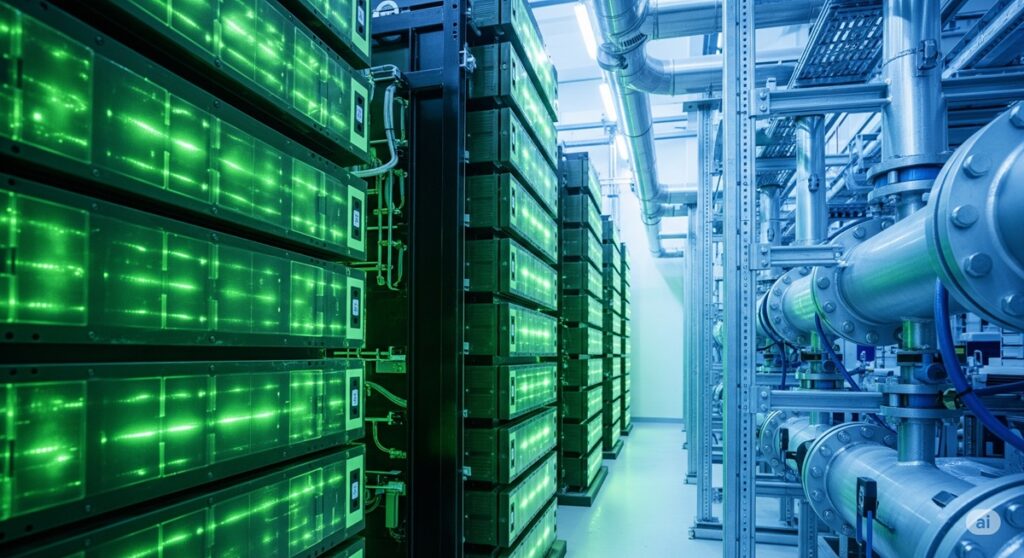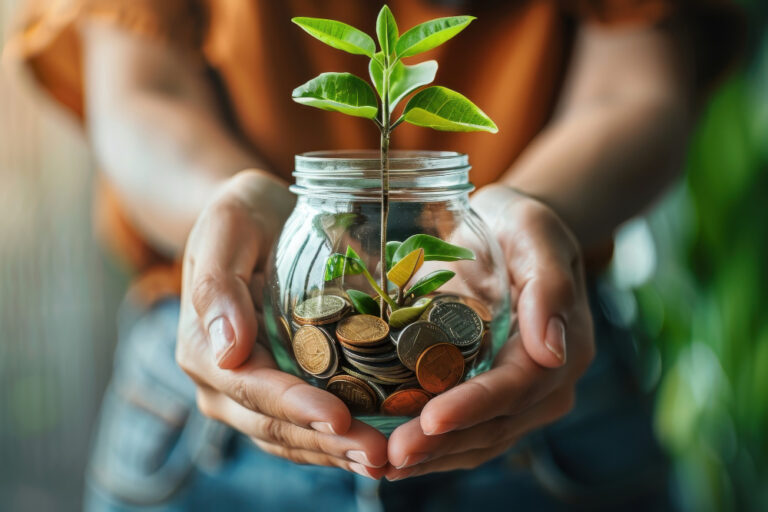Green Lending for Renewable Energy: Empowering Sustainable Projects

The Green Loan Revolution: How Innovative Lending is Powering Renewable Energy Projects Worldwide
The urgent drumbeat of climate change, coupled with an ever-growing global demand for energy, has placed renewable energy projects at the forefront of our collective future. From vast solar farms baking under desert suns to towering wind turbines harnessing offshore gales, these projects are the bedrock of a sustainable energy transition. However, a significant barrier often stands in the way of their realization: the colossal upfront capital required for their development and deployment. This is where a quiet yet powerful financial revolution is taking hold: green lending.
No longer a niche concept, green lending has rapidly emerged as the critical financial catalyst bridging the gap between ambitious sustainability goals and tangible clean energy infrastructure. It represents a paradigm shift in finance, where capital is intentionally directed towards environmental good. This article delves deep into how innovative green lending is acting as a formidable financial engine, specifically empowering renewable energy projects across the globe, examining its core mechanisms, diverse instruments, key players, real-world impact, inherent challenges, and the promising trends shaping its future.
- The Green Loan Revolution: How Innovative Lending is Powering Renewable Energy Projects Worldwide
- 1. What is green lending? Defining the Financial Catalyst
- 2. The Financial Engine: How Green Lending Powers Renewable Projects
- 3. Key Green Lending Instruments & Their Role in Renewables
- 4. The Architects of Green Finance: Key Players & Green Banks
- 5. Real-World Impact: Green Lending in Action
- 6. Navigating the Landscape: Challenges & Safeguards in Green Lending
- 7. The Future of Funding: Trends Shaping Green Lending for Renewables
- Conclusion: The Unstoppable Force of Green Finance
- Frequently Asked Questions (FAQs) About Green Lending for Renewable Energy
- Q1: What is green lending?
- Q2: How do green bonds specifically help renewable energy projects?
- Q3: What are sustainability-linked loans (SLLs), and how do they differ from green loans?
- Q4: What role do green banks play in empowering renewable energy?
- Q5: What are the main challenges faced by green lending, and how are they being addressed?
1. What is green lending? Defining the Financial Catalyst
At its core, green lending refers to a suite of financial products and services explicitly designed to finance or refinance projects that yield clear, positive environmental benefits. While its scope is broad—encompassing everything from sustainable agriculture to pollution prevention—its role in driving the renewable energy transition is paramount.
Unlike conventional finance, where environmental impact might be a secondary consideration, green lending is purpose-driven. The funds are earmarked, tracked, and verified to ensure they contribute directly to environmentally sound initiatives. This intentional alignment of financial flows with global sustainability objectives makes green lending an indispensable tool in the fight against climate change and the journey towards a cleaner energy future. It’s not just about money; it’s about funding the future we want to build.
2. The Financial Engine: How Green Lending Powers Renewable Projects
The reason green lending has become so pivotal in the renewable energy finance landscape lies in its ability to directly address the unique financial characteristics and challenges of these projects. It acts as a multi-faceted financial engine, delivering critical advantages:
- Access to Dedicated Capital: Green finance instruments tap into an expanding global pool of investors—including institutional funds, governments, and even retail investors—who are increasingly mandated or motivated by environmental, social, and governance (ESG) criteria. This ensures a consistent and growing source of funding specifically committed to green projects.
- Reduced Cost of Capital & Favorable Terms: Perhaps the most tangible benefit, green loans often come with more competitive interest rates and flexible repayment structures compared to traditional financing.
- Sustainability-Linked Loans (SLLs) exemplify this: their interest rates are dynamically tied to the borrower’s achievement of predefined environmental key performance indicators (KPIs), such as greenhouse gas (GHG) emission reductions or increased renewable energy use. Meet the targets, and the cost of borrowing decreases.
- Green bonds also benefit from a broader, dedicated investor base, often leading to tighter pricing due to higher demand from environmentally conscious investors.
- Risk Mitigation and De-risking: Renewable energy projects, particularly in nascent markets or involving new technologies, can carry perceived risks. Green lending mechanisms actively de-risk these ventures. This includes:
- Blended Finance: Combining public (e.g., development banks) and private capital to absorb initial risks, making projects more attractive to commercial lenders.
- Credit Guarantees: Provided by entities like green banks or development financial institutions (DFIs), these guarantees lower the exposure for private lenders, encouraging more participation.
- Enhanced Credibility and Transparency: Adherence to globally recognized frameworks, such as the Green Bond Principles or Green Loan Principles, demands rigorous reporting and external verification of environmental impact. This transparency builds trust, combats greenwashing, and attracts a broader base of ethical investors who demand accountability.
- Alignment with Project Lifespan: Renewable energy assets typically require significant upfront capital and have long operational lifespans (e.g., 20-30 years for a solar farm). Green loans, particularly those structured for the long term, are ideally suited to match these project characteristics, spreading financial burdens over the project’s revenue-generating period and improving cash flow.
- Incentivizing Innovation: By prioritizing and directing investment specifically towards projects with strong environmental credentials, green lending inherently encourages and accelerates technological innovation within the renewable energy sector.

3. Key Green Lending Instruments & Their Role in Renewables
The power of green lending is channeled through a variety of financial instruments, each tailored to specific needs within the renewable energy finance ecosystem:
- Green Bonds: These are fixed-income instruments where the proceeds are exclusively used to finance or refinance eligible green projects. They are a major driver of funding for large-scale renewable infrastructure. The global green bond market has seen exponential growth, reaching an estimated ~$600 billion in 2024, with renewable energy projects consistently being the largest beneficiaries, accounting for approximately 38% of all green bond issuances in recent years. This robust market allows governments, corporations, and financial institutions to raise vast sums specifically for wind farms, solar parks, and grid modernizations.
- Green Loans: Similar to conventional loans, but specifically designated for green projects. These loans often adhere to the Green Loan Principles (GLP), a framework ensuring transparency and integrity in the use of funds. Green loans offer flexibility and are suitable for a wider range of projects, from residential rooftop solar installations to commercial wind farm developments.
- Sustainability-Linked Loans (SLLs): A unique and increasingly popular instrument, SLLs do not earmark funds for specific green projects. Instead, their interest rates are directly tied to the borrower’s achievement of measurable, predefined sustainability performance targets (SPTs). For example, a utility might receive a lower interest rate on an SLL if it achieves a certain percentage increase in renewable energy generation or a reduction in its carbon emissions. This incentivizes companies to integrate green practices across their entire operations, benefiting renewable energy adoption.
- Other Instruments: The green finance landscape also includes specialized green funds (investment funds dedicated to sustainable companies and projects), green mortgages for energy-efficient homes, and sophisticated blended finance structures that combine public and private capital to de-risk projects, particularly in developing economies.
4. The Architects of Green Finance: Key Players & Green Banks
The exponential growth of green lending is the result of collaborative efforts by diverse financial institutions and innovative public entities.
- Green Banks: These dedicated public or quasi-public financial institutions are designed specifically to maximize clean energy adoption by leveraging public funds to attract private capital. They play a crucial role in de-risking projects through direct loans, credit enhancements (like loan loss reserves), and co-investments, filling critical financing gaps. Notable examples include the Connecticut Green Bank and the NY Green Bank in the US, with initiatives like the Coalition for Green Capital working to establish a national green bank under the EPA’s Greenhouse Gas Reduction Fund.
- Commercial Banks: Major global and regional commercial banks have rapidly expanded their green finance offerings, driven by burgeoning market demand, increasing regulatory pressure for ESG compliance, and their own sustainability commitments. They now provide a wide array of green loans, green bonds, and SLLs.
- Development Financial Institutions (DFIs): Multilateral (e.g., World Bank, European Bank for Reconstruction and Development—EBRD) and bilateral DFIs are instrumental in catalyzing green finance, particularly in emerging markets where perceived risks might be higher. They provide critical capital, technical assistance, and de-risking mechanisms.
- Institutional Investors: Pension funds, asset managers, and insurance companies are major drivers of the green bond market. Their increasing focus on ESG investing means they are actively seeking opportunities to allocate capital to projects that offer both financial returns and positive environmental impact.
5. Real-World Impact: Green Lending in Action
The influence of green lending is visible in countless renewable energy projects worldwide, transforming conceptual plans into tangible assets:
- Scaling Large-Scale Renewables: Green bonds have been instrumental in financing some of the world’s largest wind and solar farms. For instance, a multi-billion-dollar green bond issuance might fund a vast offshore wind project capable of powering hundreds of thousands of homes or a utility-scale solar park replacing fossil fuel generation. These projects, often requiring massive upfront investment, become viable through the dedicated, long-term capital provided by green bonds.
- Empowering Distributed Generation: At a more localized level, green loans facilitated by green banks enable community solar projects, rooftop solar installations for homeowners and businesses, and energy efficiency upgrades in public buildings. These smaller, decentralized projects collectively contribute significantly to the energy transition and create local jobs.
- Driving Corporate Sustainability: Sustainability-linked loans are pushing major corporations across various industries to reduce their carbon footprints by incentivizing the shift to renewable energy sources for their operations. Companies commit to purchasing more renewable energy or installing on-site generation, directly boosting demand for green power projects.
The quantifiable benefits of these green-financed projects are immense: significant reductions in carbon emissions, job creation in the clean energy sector, enhanced energy security by reducing reliance on imported fuels, and often, improved air quality for local communities.

6. Navigating the Landscape: Challenges & Safeguards in Green Lending
While the growth of green lending is promising, the sector faces crucial challenges that must be addressed to ensure its integrity and long-term effectiveness:
- Greenwashing Concerns: One of the most significant risks is greenwashing, where funds might be mislabeled as “green” without delivering substantial environmental benefits, or minor improvements are overemphasized. This erodes trust and can deter genuine investors. To combat this, efforts are underway to develop common definitions and robust verification mechanisms.
- Lack of Standardization: The absence of a universally accepted definition of “green” across different markets can lead to confusion and inconsistency. While frameworks like the EU Taxonomy and the ICMA Green Bond Principles provide guidance, greater global alignment is needed.
- Data Availability & Transparency: For green lending to be truly effective, consistent, verifiable data on the environmental performance and impact of financed projects is essential. This often requires additional due diligence and monitoring.
- Higher Transaction Costs (Initial): The extra layer of environmental assessment and reporting can, in some cases, lead to higher upfront transaction costs compared to traditional financing.
- Regulatory Uncertainty: Shifting government policies or changes in subsidy schemes can impact the economic viability of long-term renewable energy projects, affecting investor confidence.
To mitigate these challenges, industry bodies and regulators are continually working to strengthen frameworks, improve disclosure requirements, and enhance external verification processes, ensuring that green lending truly delivers on its promise.
7. The Future of Funding: Trends Shaping Green Lending for Renewables
The trajectory for green lending is overwhelmingly upward, driven by a confluence of factors that will continue to reshape renewable energy finance:
- Continued Explosive Growth: Investor demand for sustainable assets remains robust, and regulatory pressures for financial institutions to align with climate goals are increasing. This will ensure sustained growth in the market.
- Blended Finance & Public-Private Partnerships (PPPs): These models will become even more crucial, particularly for de-risking large-scale renewable energy projects in developing and emerging economies, where perceived risks are higher and private capital needs greater incentives.
- Technological Integration (AI & Blockchain): Artificial intelligence (AI) is set to revolutionize ESG data reporting, risk assessment, and predictive analytics for green projects. Blockchain technology could enhance transparency in carbon markets and the tracking of green bond proceeds, further combating greenwashing.
- Broader ESG Focus: The scope of green lending is expanding beyond just climate change mitigation to include biodiversity conservation, water management, and social equity (often called “transition finance” or “social bonds”), offering a more holistic approach to sustainable development.
- Innovation in Financial Products: Expect to see the development of even more tailored and sophisticated instruments for specific green technologies or unique project types, adapting to the evolving needs of the renewable energy sector.
- Community Ownership & Decentralization: As distributed renewable energy systems (e.g., rooftop solar, microgrids) become more prevalent, new models for community ownership and peer-to-peer financing are emerging, democratizing access to green capital.
Conclusion: The Unstoppable Force of Green Finance
Green lending is no longer a niche financial segment; it is rapidly becoming an unstoppable force that is fundamentally transforming the landscape of renewable energy project development. By unlocking vast pools of capital, reducing project costs, mitigating risks, and enforcing transparency, it acts as the essential financial engine powering the global shift towards a sustainable future.
The innovative financial instruments, the commitment of green banks, and the growing participation of mainstream financial institutions are collectively accelerating the deployment of wind, solar, and other clean technologies at an unprecedented pace. While vigilance against greenwashing and continued efforts towards standardization are crucial, the trajectory is clear. Green lending is proving itself as a powerful, practical solution for meeting our urgent climate goals, building a resilient energy system, and creating a prosperous, sustainable world for generations to come.
Frequently Asked Questions (FAQs) About Green Lending for Renewable Energy
Q1: What is green lending?
A: Green lending refers to financial products and services specifically designed to finance or refinance projects that deliver clear, positive environmental benefits, such as renewable energy development, energy efficiency upgrades, or sustainable agriculture.
Q2: How do green bonds specifically help renewable energy projects?
A: Green bonds are debt securities where the funds raised are exclusively used for eligible green projects. For renewable energy, they provide a dedicated, often large-scale source of capital for major projects like solar farms and wind parks, attracting investors with sustainability mandates.
Q3: What are sustainability-linked loans (SLLs), and how do they differ from green loans?
A: Sustainability-Linked Loans (SLLs) are loans where the interest rate can decrease if the borrower achieves specific, measurable sustainability performance targets (e.g., reducing carbon emissions). Unlike green loans, which earmark funds for specific green projects, SLLs incentivize overall corporate sustainability, impacting all aspects of a company’s operations, including its energy sourcing.
Q4: What role do green banks play in empowering renewable energy?
A: Green banks are public or quasi-public institutions that leverage public funds to mobilize private capital for clean energy projects. They help by providing direct loans, credit enhancements (like loan loss reserves), and co-investments, effectively de-risking projects and filling financing gaps that traditional lenders might avoid.
Q5: What are the main challenges faced by green lending, and how are they being addressed?
A: Key challenges include concerns about greenwashing (funds being mislabeled), a lack of universal standardization across markets, and the need for more transparent data on environmental impact. These are being addressed through robust frameworks like the Green Bond Principles, the EU Taxonomy, and ongoing efforts by regulators and industry bodies to enhance verification and reporting.



